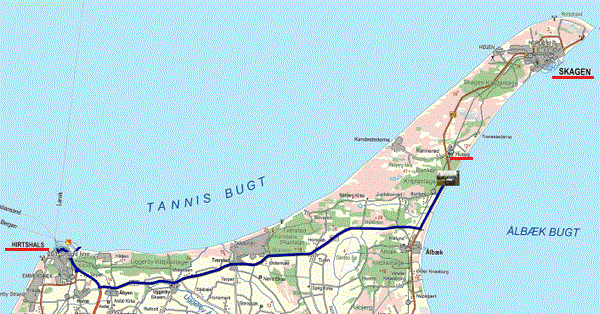
The Norröna entered the port of Hirtshals, Denmark at the scheduled time of 11:30 am local time. The disembarkation process took some time. I got out of the boat around 12:00. I don't have time to start electronic prostheses, I have to follow the line. I waited until I got to the entrance into Hirtshals to fill up on gas oil and food. I am back in old Europe! It is raining with a pleasant temperature. I was heading for the northern tip of Denmark, the Jutland peninsula. I pulled up to a long parking lot bordered by a cyclade lane, and noticed that most of the cyclists had electric assistance. They are environmentalists to a certain point, they forget that the battery requires rare earths and that its production is polluting, like the production of electricity! All in good time, don't panic. Jutland is a flat country, with trees, crops etc.
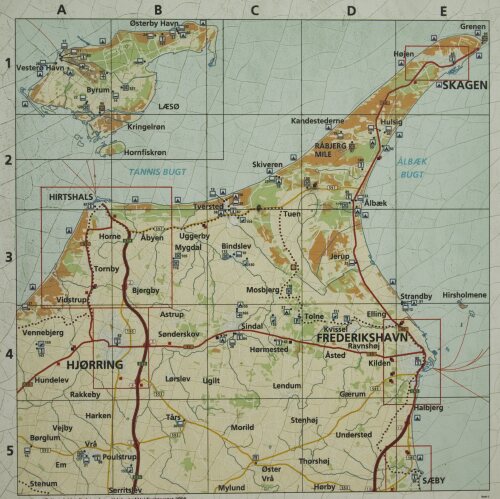 |
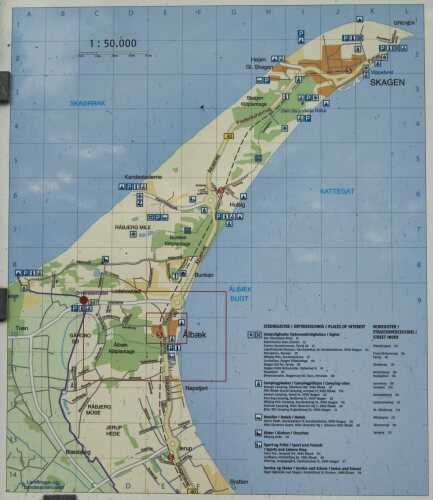 |
| Northern Jutland, Denmark | |
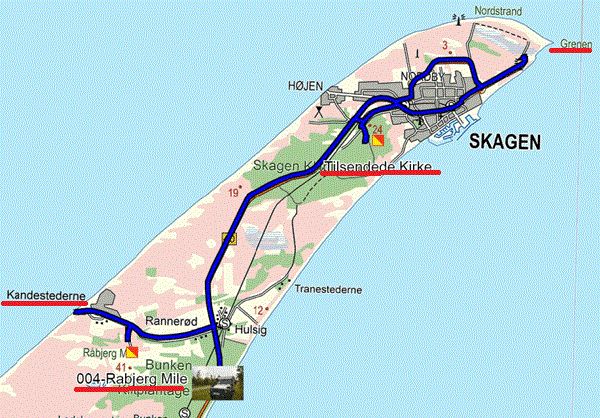
On Sunday September 12, I left my bivouac temporarily, around 10 a.m., to return there in the afternoon, after four visits. The first was in Kandestederne where I met three German deep-sea kayakers preparing themselves in spite of unfavorable seas. On this Sunday I noted that the vehicles registered in Germany were very numerous, even the majority. A small detour to Rabjerg Mile reminded me of the Dune du Pilat, I did not climb it. Then I headed for Genen, where an arm of the Baltic Sea meets that of the North Sea, which is the Finistere of Jutlan where the invaders from Denmark tried to invade like the English in the 19th century. The Third Reich established bunkers there during World War II with the success that we know! Finally I ended my visits to the Tilsendede Kirke lost in the sands, unfortunately for the second time of the day I threw in the towel, because the staircase to reach the top of the tower is steep and narrow. I returned to my bivouac.
|
|
| Kandestederne |
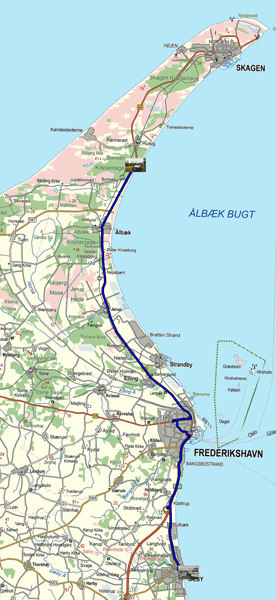
Monday, September 13, I left camp around 9:00 am to go to Frederikshavn in search of a store selling SIM cards for the modem. I questioned locals, very helpful, but not expert in describing the direction to follow, of course on foot. Gradually I arrived at the place. The junk seller was not an expert at activating the SIM card, either. I tested its operation which seemed OK. I resumed my road to visit Saeby about 14 km. The SIM card no longer worked. I returned to the Frederikshavn store where an expert finally took care of the installation. He used my smartphone to insert the SIM card and enter the codes displayed on the receipt in the vernacular! I was testing again, it was OK, to be continued. Each supplier in each country has their own abstruse procedure for Beijing. Saeby’s curiosities boil down to the statue of Saeby’s Lady and the massive church remains of a Carmelite monastery from 1470. The interior has a pretty altarpiece and medieval frescoes. The modern organ is worth a visit. The parking lot of the marina greeted me without question.
|
|
| Saeby's Lady |
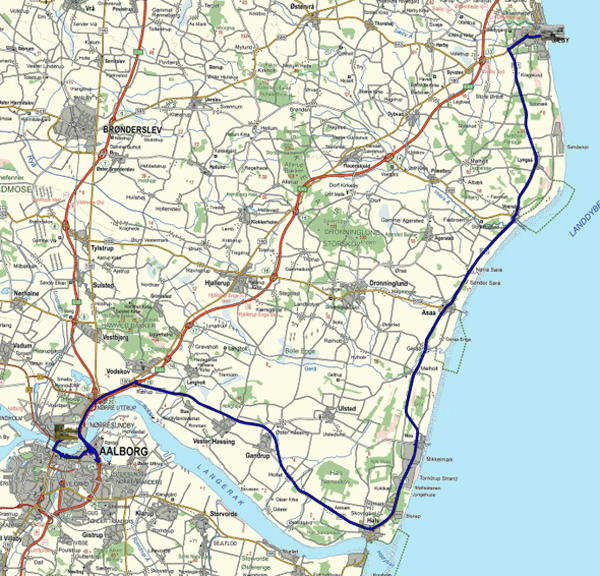
Tuesday September 14th I joined the city of Aalborg by the departmental road 541 to immerse myself in the deep Denmark, flat country, thorny forests, slender one-story houses, some municipalities had advantageously replaced the speed bumps. by chicanes avoiding dancing the samba, thank you for the shock absorbers. I visited two curiosities including the cathedral. The city center is very lively, the main street being pedestrianized dedicated to businesses mainly female large consumers of the appear. When entering the city by the motorway I missed the exit of the centrum to find myself in a suburb and by chance a parking lot for my overnight, everything is bad luck.
|
|
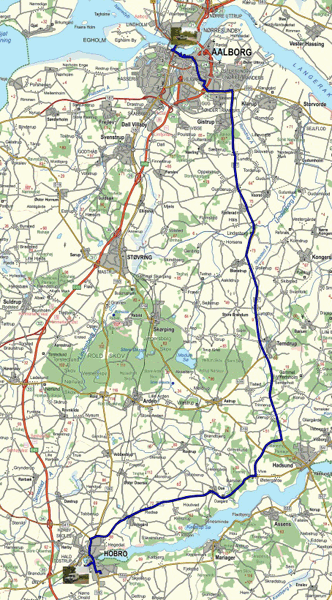
Wednesday September 15th the weather is raining which manifests itself in the late morning shortly after I visit Fyrkat the ring Viking fortress in Hobro. Of course, only the ring remains which was excavated and restored. It surrounded the dwellings, a replica of which was erected outside the ring. A few kilometers before, a museum presents dwellings with furniture accompanied by interpretative panels. I returned to the Fyrkat parking lot to set up my bivouac there.
|
|
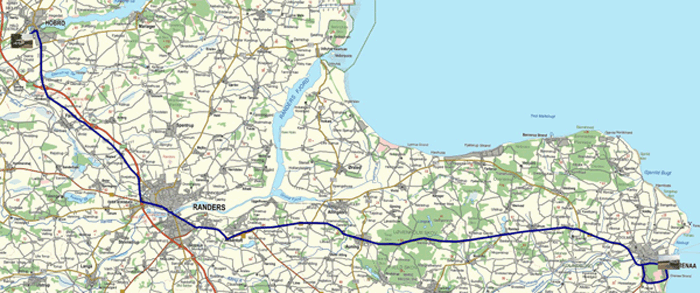
Thursday September 16 after a rainy night, the morning was also rainy until Randers which I crossed without stopping. I drove to Grenaa on the Kattegat Strait coast hoping the wind would clean the sky. It didn't happen, it was no longer raining but the sky was still leaden. The city is a port of goods without tourist interest if not an aquarium. I bivouacked in a parking lot.
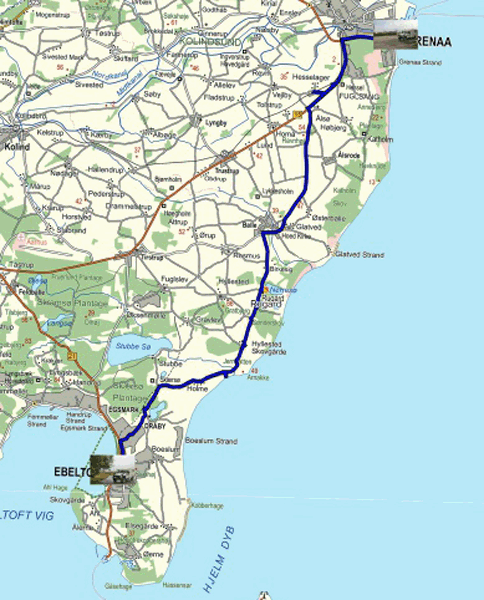
Saturday, September 17, the weather is still rainy and the sky overcast. On the way, through the sometimes narrow departmental roads, I discovered a village, Rugard, a few houses grouped around a brick castle undeniably a former seigneurial estate. For the record, Denmark is a constitutional monarchy like Great Britain, Sweden and Norway. The objective of the day was to visit the Glass Museum with an exhibition of the works of Lino Tagliapietra. The works on display are an enchantment of color and form. A video shows the work of the Master, which can be revealed from his know-how. In the garden, a workshop shows the work of glassblowers. I bivouacked in the parking lot behind the museum, in the rain.
|
|
| Glasmuseet, Lino Tagliapietra |
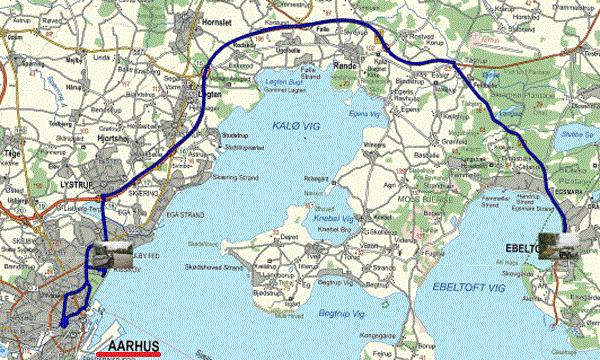
On Saturday September 18 the rain did not appear. In Aarhus I visited the Aros, Aarhus Art Museum, housed in an ultra modern building topped by a rainbow that offers a 360 ° view in the colors of the rainbow, it's magic. It presents the works of Danish artists, paintings, sculptures. The organ point is a 4.5 meter tall crouching child weighing 500 kg whose skin appearance looks alive! This was my first use of a Danish parking meter which only offers three languages, Danish, English and German. Payment by bank card is done in two installments, the first time to enter the vehicle's license plate number and the second time on the way back to pick up the car by reinserting the bank card to finalize the payment, phew. Aarhus is the second largest city in Denmark with +270,000 inhabitants. The search for overnight parking was a piece of bravery on the outskirts of town.
|
|
| Aarhus, ARoS |
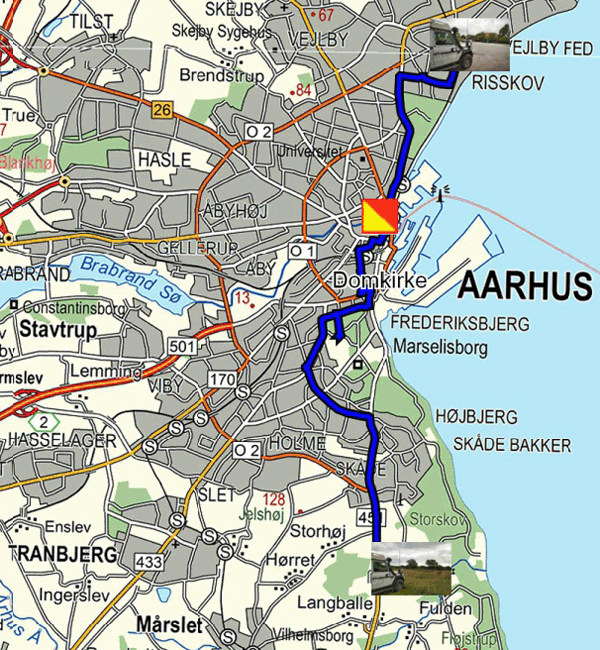
Sunday, September 19, the day promised to be gloomy, cold and overcast. The visit to the 12th and 15th century Aarhus Cathedral with medieval frescoes as well as the remarkable altarpiece of the Lübeck school was quick. After the reform it was dedicated to the evangelical religion. No-photo, two cerberus equipped with earpieces like members of the US secret service kept vigilant guard; of course they intercepted me kindly, but I had read the discreet sign at the entrance. Not without detours due to a foot race I managed to reach the Moesgaard-Museum (MOMU) about 10 km south of the city. This remarkable museum presents the evolution of the human species since Lucy, the Australopithecus discovered in Ethiopia on the steps of the staircase of human evolution. But that is not the highlight of the Neanderthal man-centered exhibit that appeared in northern Europe. My travels have focused me on Homo Afarensis emerging in Africa and then spreading throughout Europe. This museum shows, thanks to recent genetic analyzes, that the Neanderthal from Western Europe as well as the Denisovan from Eastern Europe have given birth to hybrids through sexual relations. These two hominids have disappeared but have left genetic traces in the genome of peoples in Asia and Australia as well as in Tibet. here The museography is remarkable and worth the detour! I bivouacked on an extension of the museum parking lot.
|
|
| Aarhus, Domkirke |
|
|
| Aarhus, Moesgaard-Museum |